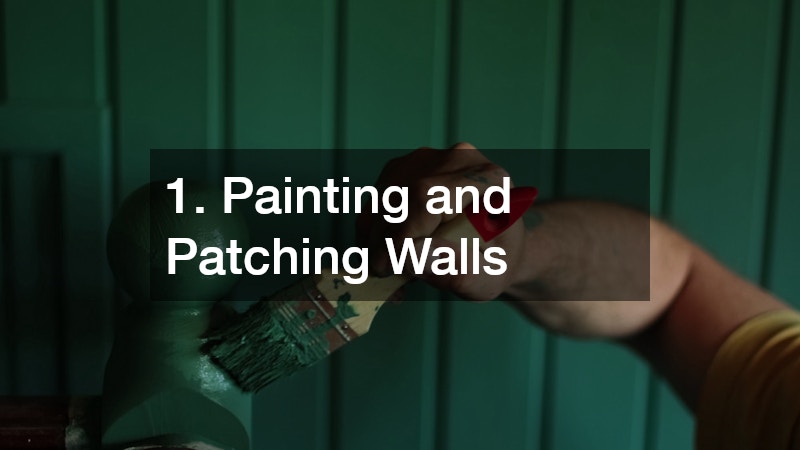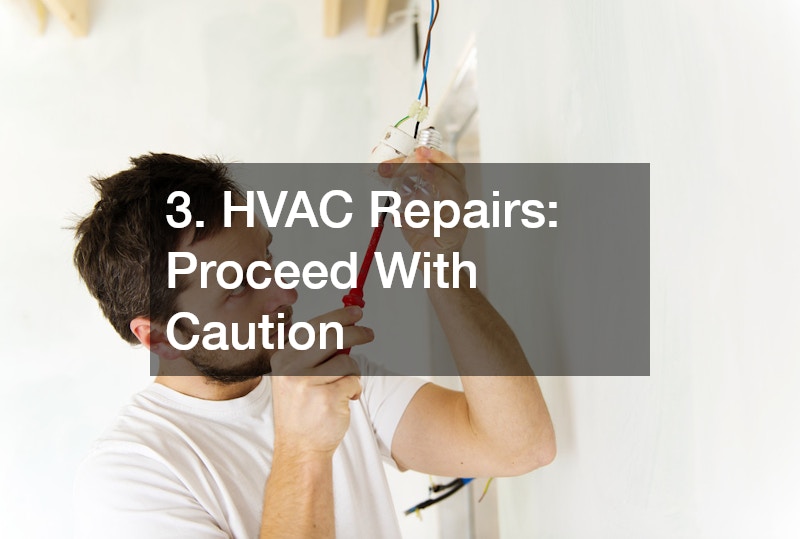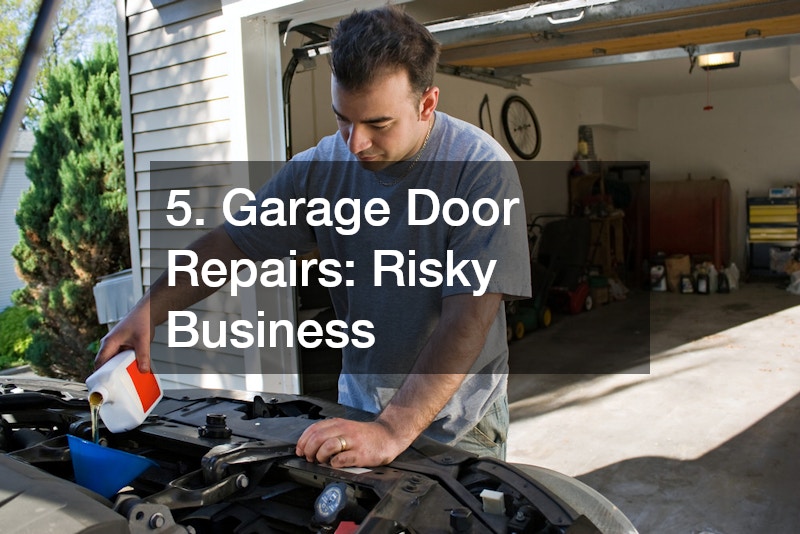
The idea of fixing up your home on your own has never been more popular. With countless tutorials on YouTube, TikTok, and DIY blogs, it’s easier than ever for homeowners to pick up a hammer or wrench and get to work. For some, it’s a rewarding challenge. For others, it’s a way to save on professional service costs. But not every home project should be handled without experience. In fact, attempting some common home repairs on your own can be dangerous, costly, or downright illegal if done incorrectly.
Knowing when to roll up your sleeves and when to call in a licensed professional is the key to responsible homeownership. While it’s empowering to change a faucet or patch drywall on your own, some repairs require specialized tools, safety training, or regulatory compliance that most homeowners aren’t equipped to handle. Mistakes can lead to expensive damage, injuries, or complications with insurance claims and property sales down the line.
In this blog, we’ll walk through a variety of common home repairs, breaking down which ones are generally safe for DIY enthusiasts and which should be left to the experts. We’ll also discuss the hidden complexities behind seemingly simple projects and the long-term implications of doing things wrong. Whether you’re trying to replace a thermostat or deal with structural issues, this guide will help you decide when to grab your toolbox—and when to pick up the phone.
1. Painting and Patching Walls
Let’s start with one of the most popular DIY tasks: interior painting and wall repair. Most homeowners can handle minor drywall patching, filling small holes, and applying a fresh coat of paint. These are among the safest and most rewarding common home repairs for beginners.
The biggest pitfalls in DIY painting are rushing, skipping prep work, or using low-quality materials. Take your time to clean the walls, tape edges carefully, and apply primer when necessary. With some patience, the result can rival that of a professional painter—at a fraction of the cost.
Patching larger holes or textured surfaces may require more skill. In those cases, it’s okay to consult a handyman if you’re unsure. But overall, this category is well-suited to DIY homeowners with basic tools and a little motivation.
2. Replacing Fixtures and Hardware
Updating light fixtures, cabinet knobs, door handles, or sink faucets falls under manageable common home repairs for most DIYers. These tasks are largely cosmetic, and many come with straightforward instructions.
Still, there are precautions to take. For example, when replacing a light fixture, always turn off the power at the breaker—not just the light switch. Improper electrical handling can be dangerous, even with low-voltage items.
As long as you’re careful and follow manufacturer guidelines, these small upgrades can significantly refresh your home’s appearance and functionality without needing to hire a contractor.
3. HVAC Repairs: Proceed With Caution
When it comes to heating and cooling systems, DIY involvement should be minimal. While you can and should change air filters regularly and keep vents clean, most internal system repairs are better left to certified HVAC companies.
Tinkering with refrigerant lines, electrical wiring, or blower components can be risky if you’re not trained. Modern systems are complex, and making the wrong adjustment can cause performance issues or void your warranty. This is especially true for furnace repair, which often involves gas lines and carbon monoxide risks.
HVAC systems also need to comply with local codes, especially when upgrades or replacements are involved. In this case, DIY solutions may be more harmful than helpful. When your system needs more than basic cleaning, it’s best to consult a licensed professional.
4. Plumbing Projects: Know Your Limits
Many plumbing jobs, such as replacing showerheads, plunging toilets, or clearing hair from drains, are perfectly manageable for the average homeowner. But more complex issues like installing new piping, adjusting water pressure, or fixing leaks behind walls should be approached with extreme caution.
For example, working with water heaters can be particularly dangerous due to their electrical or gas connections and pressure-sensitive tanks. An incorrectly installed unit can cause leaks, flooding, or even explosions.
More serious plumbing issues often arise in older homes or rural properties, especially where water systems are tied into septic tanks. Mistakes here could lead to damage or contamination. If you suspect anything beyond a surface-level issue, it’s safer—and smarter—to call a licensed plumber.
5. Garage Door Repairs: Risky Business
Your garage door might not seem like a complicated mechanism, but it’s one of the most dangerous systems in your home. One of the lesser-known common home repairs that homeowners attempt—and often regret—is DIY garage door repair.
Garage doors operate under heavy tension, and their springs and cables can cause serious injury if released improperly. It might be tempting to save a few hundred dollars on a broken spring or misaligned track, but the risk to your safety isn’t worth it.
Instead, rely on a reputable garage door service to handle repairs or replacements. Professionals have the tools, training, and experience to do the job safely. Meanwhile, homeowners can stick to lubricating tracks and tightening visible hardware as a safe form of preventative maintenance.
6. Roofing: Don’t Risk the Fall
There are few repairs more tempting for confident DIYers than patching or replacing roof shingles. After all, how hard could it be to climb up there and nail down some new ones? But roofing is not only more complex than it looks—it’s also incredibly dangerous.
From leaks and ventilation issues to insulation and structural damage, roofing involves much more than just the surface layer. Additionally, working on a roof presents a serious fall risk. According to OSHA, falls from roofs are one of the leading causes of construction-related injuries.
Hiring a professional roofing contractor ensures the job is done correctly, safely, and up to code. This is especially important for homeowners with complex structures or those in need of metal roofing repair, which requires specialized materials and techniques.
7. Septic Systems: DIY is a Definite No
If your property is on a septic system, don’t make the mistake of assuming you can handle problems on your own. Of all the common home repairs, septic maintenance is perhaps the least suitable for DIY—even if you’re comfortable getting your hands dirty.
Septic systems rely on a delicate biological balance, and improper handling can cause contamination, backups, or environmental violations. Even routine septic cleaning should be performed by trained professionals with the proper equipment.
In cases where your system needs replacement, septic tank installations require permits, inspections, and careful engineering. Mistakes in this area can result in major property damage and legal issues. This is one situation where calling a certified specialist isn’t just advisable—it’s essential.
8. Structural Repairs: Always Leave It to the Pros
Sometimes, a DIYer will discover cracking drywall, sticking doors, or uneven flooring and assume it’s just cosmetic. In some cases, though, these signs indicate deeper structural issues like shifting foundations, water damage, or compromised framing.
Attempting to “fix” these signs without addressing the root cause can be a huge mistake. Structural issues can quickly worsen if not properly diagnosed and treated, leading to safety hazards and significant depreciation in property value.
If you suspect any foundational movement, get a professional assessment before doing any cosmetic patchwork. Whether it’s through a structural engineer or contractor, you need to understand what’s really happening behind the scenes. This holds true for decks, porches, and any part of the home that supports weight.
9. Solar Panels: Professional Installation Required
With the growing popularity of renewable energy, many homeowners are considering solar panels as part of their long-term energy strategy. But solar installation is far from a DIY-friendly project.
Solar systems involve electrical work, structural assessments, and utility integration—all of which must comply with state and local regulations. Improper installation could void your system’s warranty, damage your roof, or fail to generate the expected energy output.
In addition, most states require inspections and permits for solar installation. This means even if you could install it yourself, you’d still need to coordinate with local officials and potentially make costly corrections if the job doesn’t pass code.
Working with a certified installer ensures the system is optimized for your home’s unique conditions and qualifies for rebates or tax incentives. While DIY kits exist, they simply don’t offer the same long-term reliability.
10. Electrical Work: Only Small Fixes Are Safe
Few systems in your home are as potentially dangerous as the electrical system. Installing a new light fixture or outlet cover is generally safe, provided you cut power at the breaker and follow basic safety protocols. But anything beyond that—like running new wiring, modifying breaker boxes, or upgrading circuits—should be left to the professionals.
Of all the common home repairs, electrical mistakes can have the most immediate consequences. Fires, shocks, or overloaded circuits are real risks for homeowners attempting to work on live systems without training.
Licensed electricians not only ensure your safety but also understand how to bring installations up to current code, which is critical if you plan to sell your home in the future. Even if you feel confident, don’t let overambition put your family or property at risk.
11. Well and Water System Repairs
Homes that rely on private wells need occasional maintenance or system upgrades. While homeowners might be able to change a filter or reset a pump, anything beyond basic maintenance should be handled by a well drilling company.
Water quality, pump performance, and system pressure are just a few of the variables that need to be carefully managed. DIY well repairs risk contaminating your drinking water or damaging expensive components below ground.
Additionally, modifying a well system often requires permits or water quality testing. Licensed contractors are familiar with regional regulations and can ensure the system remains safe and compliant with environmental standards.
12. When to Hire and When to Learn
Ultimately, the choice to DIY or hire a professional comes down to a few important questions:
- Is the project cosmetic or structural?
- Are you working with water, gas, or electricity?
- Could a mistake cause injury, property damage, or legal trouble?
Projects like painting, landscaping, and replacing door hardware are relatively low-risk. But tasks involving high-voltage systems, heavy machinery, or complex building codes require more expertise.
If you’re interested in learning, there are safe ways to get involved without taking on full responsibility. You might assist a licensed contractor, enroll in a local class, or even use minor DIY repairs as a way to build confidence. Just be honest about your limitations and prioritize safety above all.
Taking on home improvement projects can be a fulfilling way to personalize your space and even save money. But knowing which tasks to handle yourself—and which to leave to professionals—can protect your home, your budget, and your well-being. While it may be tempting to try and tackle every repair you find online, not every task is as easy or safe as it seems.
Among the common home repairs discussed in this guide, some are perfect for beginners while others are far too risky or complex. Swapping out light fixtures, painting a room, or fixing a leaky faucet may be rewarding and educational. But when it comes to HVAC servicing, furnace repair, septic cleaning, or metal roofing repair, there’s no shame in calling in the experts.
Even advanced systems like water heaters, solar installation, or services provided by a garage door service or well drilling company require precise knowledge and compliance with safety codes. These are not the types of common home repairs where cutting corners—or relying on online forums—is advisable.
Be proactive, but be realistic when fixing common home repairs. Respect the systems that make your home work. And when in doubt, seek professional guidance. The best homeowners aren’t the ones who do everything themselves—they’re the ones who know when to take action and when to ask for help. By approaching each project with clarity and caution, you can keep your home running smoothly and your investment protected for years to come. Reach out to local experts today to begin your home improvement journey.




